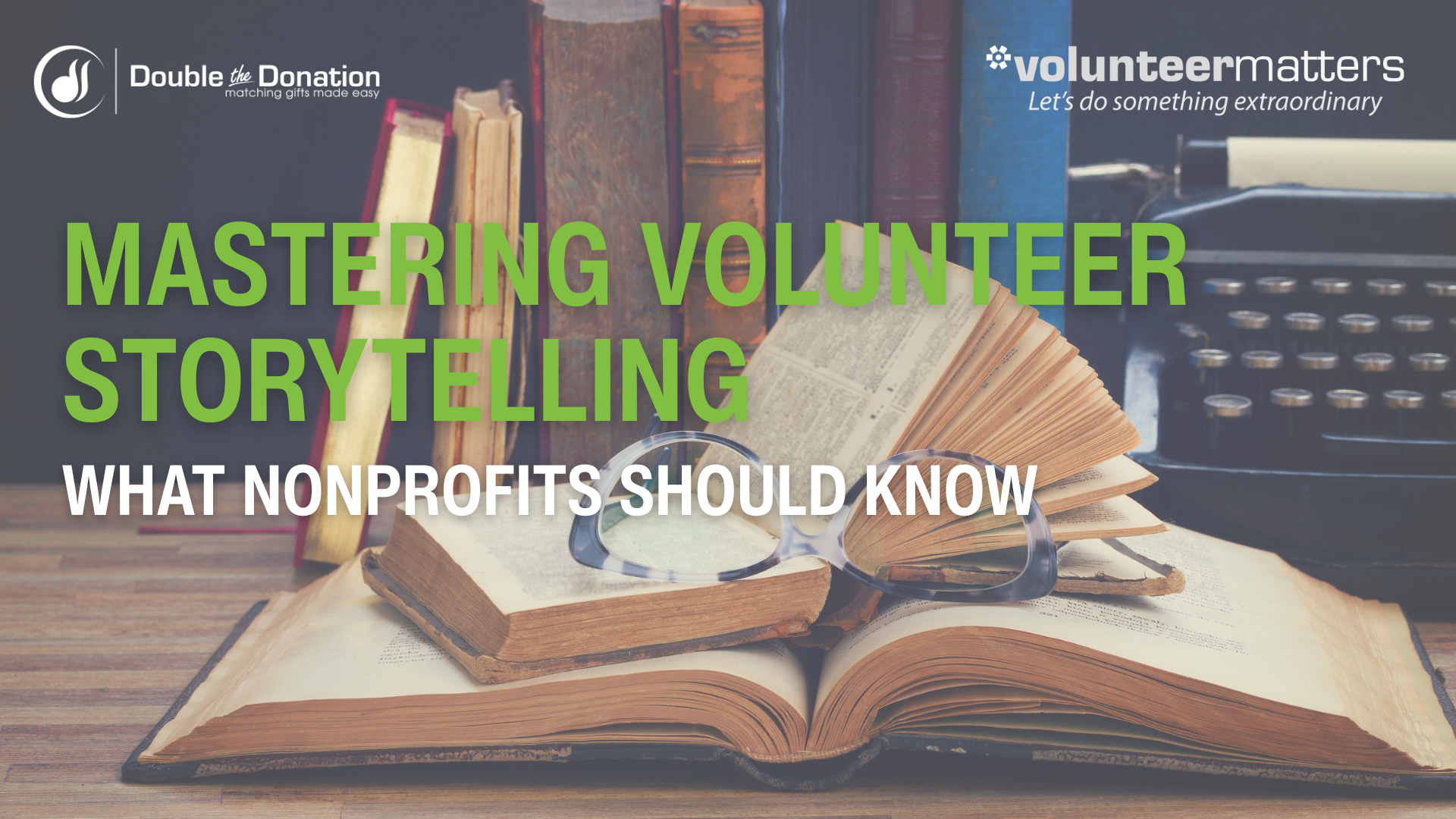Learn how nonprofits can master volunteer storytelling to boost engagement, demonstrate impact, and grow workplace and other volunteer programs effectively.

Volunteer engagement has become a critical pillar for nonprofits, not just for getting hands on deck but also for building a narrative that drives impact. However, simply stating the hours volunteered or the number of volunteers engaged doesn’t go far enough. To truly harness the power of your volunteer initiatives, especially within corporate partnerships, compelling storytelling is essential.
In this blog post, we’ll explore:
Volunteer storytelling is more than just a way to talk about your program; it’s a strategic tool that can drive more engagement, strengthen your relationships with partners, and showcase the true impact of your work.
Let’s begin.
Volunteerism is at the heart of many nonprofit missions, but organizations often struggle to convey the depth of volunteer contributions. A focus on quantifiable metrics, like hours volunteered or the number of employees engaged, is useful. Still, it often fails to tell the whole story of how these efforts truly impact the community.
When done right, storytelling provides the context behind the data, making it meaningful for donors, volunteers, and corporate partners alike. By focusing on the experiences, challenges, and successes of volunteers, you’re not just reporting statistics; you're showing the human side of the equation. Stories make the numbers resonate and remind people of the purpose behind the work.
For nonprofits, this means better engagement, stronger support from corporate partners, and, ultimately, more volunteers willing to give their time and skills.
When it comes to workplace volunteer programs, social proof is invaluable. Companies often seek to create a culture of giving back, and they need reassurance that their employees' efforts are making a tangible difference. Storytelling plays a crucial role in this by providing a sense of legitimacy and showing that the volunteer programs aren’t just a checkbox, but an integral part of their community impact.
Social proof works by communicating real-life examples of how individuals or teams have contributed to meaningful change. These stories help to humanize the statistics and demonstrate that corporate volunteer initiatives go beyond CSR alone. They foster personal growth and build stronger connections within the community.
For instance, when a corporate volunteer team works together on a project, showcasing how their efforts helped a local nonprofit raise funds or impact a specific community can create a ripple effect. Other employees will be inspired to participate, increasing engagement across the organization.
It can be tempting to focus on numbers… how many hours volunteers worked, how many employees participated, or how many nonprofits received support. While these figures are important, they don’t capture the full value of corporate volunteerism.
Instead of stating “we engaged 100 employees for a total of 500 hours,” consider framing the story in terms of impact. What did those hours accomplish? How did the volunteers make a difference? Did they help a school receive resources that it wouldn’t have otherwise had? Did they build houses for families in need?
For example, “Our 100 employees contributed over 500 hours helping to rebuild homes, directly benefiting 50 families and improving local infrastructure.” This simple change provides not only the number of volunteers and hours worked but also paints a clearer picture of the tangible impact made.
This approach creates a narrative that speaks to the heart of what volunteers are doing, reinforcing the idea that their time is making a lasting difference.
As nonprofits increasingly rely on corporate partnerships to power volunteer programs, it’s essential to tell compelling stories about those engagements. Corporate partners don’t just want to know how many employees participated. They want to see how their involvement made a real, measurable difference to your cause.
When crafting a story for your corporate partners, emphasize both the human element (the volunteers’ experiences) and the organizational impact (how their time and effort translated into tangible results).
For example, instead of saying “We worked with ABC Corp. to provide meals for 200 families,” shift the focus to the broader impact: “Thanks to ABC Corp’s volunteer team, 200 families in need received hot meals and groceries, ensuring they had the resources to thrive during a difficult time.”
Corporate partners appreciate knowing that their employees’ volunteer efforts not only help them fulfill their CSR goals but also create measurable outcomes in their local community. This deepens the relationship and encourages further engagement.
Great storytelling starts with great content. To craft stories that resonate, nonprofit organizations need to prioritize the collection of detailed volunteer experiences. Here are a few tips to help gather and create compelling volunteer stories:
By using these strategies, nonprofits can effectively highlight the real impact their volunteers make, which ultimately increases engagement, boosts morale, and builds stronger relationships with corporate partners.
Volunteer storytelling isn’t just about reporting on the hours worked. It’s about showcasing the real impact of those efforts. Through compelling narratives, nonprofits can not only demonstrate the value of their volunteer programs but also encourage further participation, especially from corporate partners.
If your nonprofit is ready to take its workplace volunteer programs to the next level, start crafting compelling stories that go beyond the numbers. Share these stories widely, and watch your volunteer engagement grow.
Practical tips and expert insights to help your organization recruit, onboard, and retain dedicated volunteers.
Nonprofits have to face a lot of difficulties, but their volunteer program shouldn’t be one of them. Volunteers should be one of the biggest assets every nonprofit organization has, but for many, it’s a consistent struggle and they’re not sure how to fix it.
